|
How cools is this?! A few weeks after their SciBridge workshops, students at Makerere University have taken their new knowledge of dye-sensitized solar cells and shared it with their community at the 2014 UNESCO World Science Day exhibition! This is what SciBridge is all about - disseminating ideas with hands-on experiments and watching how they spread and grow! We are thrilled to enable these young scientists to innovate and educate! The solar cell exhibit was organized by SciBridge Vice Chair and Makerere University Physics lecturer, John Paul Eneku. John Paul writes: "Today our students (Ireen Ankwasa, Ivan Gimei, & John Bosco Ssebandeke) successfully exhibited dye sensitized solar cells on the World Science Day celebration held here at the university supported by UNESCO. Their exhibition table was the busiest because the idea of a dye sensitized solar cell was rare and visitors were impressed. The table was also visited by the chief guest and visitors from UNESCO, who were impressed." Check out the great photos from the event below! Fantastic job by all!
1 Comment
While the dye-sensitized solar cell workshops are off to a great start in Uganda, SciBridge volunteers at UT Austin have been working on developing a new experiment kit. This time, our goal is to demonstrate energy conversion with aluminum-air (Al-air) batteries. Metal-air batteries have received a lot of attention over the past few years due to their tremendously high theoretical energy densities. Researchers are hard at work trying to make metal-air batteries rechargeable and more efficient. Our goals for the Al-air battery kits are (1) to let the students make working batteries that can light up a LED and (2) ask critical questions about what makes metal-air batteries so hard to re-charge. This discussion naturally leads to electrocatalysis, another highly active research area. Today, UT Austin grad students Benjamin and Siyang and our 1st undergraduate student, Kevin, joined me for a fun morning of playing around with the experiment. Check out the photos below! -Veronica Siyang carefully applying carbon ink onto nickel mesh to make the air cathode. Siyang and Benjamin holding the electrical contacts to the battery. After several configurations, we get the LED brightly lit!
The first-ever SciBridge web seminar was held earlier today at Makerere University! The web seminar was given by Nella Vargas-Barbosa of Penn State University and Joint U.S.-Africa Materials Initiative alum. The web seminar was attended by the students who did the solar cell experiment just last week, and they were organized by John Paul Eneku (SciBridge Vice-Chair) and Alex Okello of the Physics Department at Makerere University.
John Paul writes: "Indeed we have just had the first SciBridge web-based seminar (Alex, I and our students) with our wonderful researcher being Nella Vargas-Barbosa who was online live from U.S.A. It was great, very educative, informative and has inspired the students. The excitement is huge among the students because they have learnt much more about a dye sensitized solar cell, which they ably fabricated a couple of days ago. More so they were able to ask more burning questions and got satisfying responses. Their passion for dye sensitized solar cells has just gotten higher and are desperate to do something to contribute to the global course of solar cell research. As a starting point they will be taking the solar cell activity to the public through exhibition of their recently fabricated dye sensitized solar cells on world science day celebrations coming up on Monday 10 November which is supported by UNESCO and hosted by Makerere University. Later on (in the forthcoming academic semester, February 2015) they will take on individual research projects to explore the potential within a range of our local dyes. We consider this project activity a special gift to us because many students elsewhere deserve the same and yet there is no opportunity for them. We, the instructors and our students, would like to sincerely thank very much our research expert (Nella Vargas-Barbosa) for educating and supporting us; the SciBridge Chair and U.S Organizer (Veronica Augustyn) for thinking about us so passionately and mobilizing all the required resources and delivering them in time; the volunteers in U.S who unconditionally responded to Veronica’s call during resources mobilization; the U.S universities involved especially UCLA and University of Texas at Austin for all the logistical support and Makerere University (Dept. of Physics) for accepting and supporting SciBridge and above all, the SciBridge collaboration for the wonderful opportunity. We will forever be grateful. We will support, promote and stay committed to Scibridge and its activities at all times." Check out the photos from the event below! We have fantastic news to share from Makerere University in Kampala, Uganda. John Paul, SciBridge co-chair and Lecturer in Physics, led not one but TWO first-ever SciBridge project workshops last Friday and Saturday on dye-sensitized solar cells for his undergraduate Physics students. John Paul writes: "The students enjoyed the hands-on activity and had some good results. It was very interesting and a moving experience for students who ably fabricated working dye-sensitized solar cells. We now look forward to having a web-seminar on Friday November 6, 2014. Our students are motivated and look forward to taking on individual research topics in dye-sensitized solar cells using a range of local natural dyes of their choices. This they will do as part of their undergraduate program which requires them to conduct research in topics of their interest and it starts in the next academic semester (opening in February 2015)." Check out the photos from the two very succesful workshops at Makerere University below! Preparing conductive glass slides (front to back): Samuel Onoro, Francis Ssendi, Robert Kato, and Levi Kwemoi. Drying the TiO2-coated films (L to R): Panzi John Makawa, Robert Kato, Levi Kwemoi, Sadick Mukasa, Egido Bataringaya, Francis Ssendi, Ireen Ankwasa, and John Bosco Ssebandeke. Coating slides with graphite (L to R): Sadick Mukasa, Levi Kwemoi, John Bosco Ssebandeke, John Paul Eneku, Robert Kato, and Samuel Onoro. Soaking TiO2 slides in anthocyanine dye (L to R): Samuel Onoro, Sadick Mukasa, and Levi Kwemoi. Samuel Onoro measuring the graphite-coated slide conductivity. Samuel Onoro and Sadick Mukasa adding the electrolyte. Washing the glass slides (L to R): Ireen Ankwasa, Francis Ssendi, and Elia Bwengye. Measuring the solar cells! (L to R): Godfrey Opio, Francis Ssendi, Panzi John Makawa, Ireen Ankwasa, Elia Bwengye, and Knoxwell Kamuhimbise. Lab briefing (L to R): John Paul Eneku (SciBridge Vice-Chair & Lecturer), Panzi John Makawa, Knoxwell Kamuhimbise, Francis Ssendi, Ireen Ankwasa, and Elia Bwengye. The students experimenting with a new electrolyte (L to R): Knoxwell Kamuhimbise, Godfrey Opiyo, and Francis Ssendi. The students with their assembled solar cells (L to R): Knoxwell Kamuhimbise, Ireen Ankwasa, John Paul Eneku (SciBridge Vice Chair and Lecturer), Francsi Ssendi, and Elia Bwengye. These workshops would not have been possible without financial support from the Materials Research Society (MRS) Foundation Grassroots Grant Award. We thank the University of California, Los Angeles for the dye-senitized solar cell experiment design. We also thank our home institutions, the University of Texas at Austin and Makerere University, for supporting and encouraging the SciBridge project.
The next stage of the workshop is a web-seminar, to be given by Nella Vargas of Penn State University. Connect with the SciBridge project and join in our discussions on the Facebook page: www.facebook.com/scibridge! |
Archives
February 2023
|

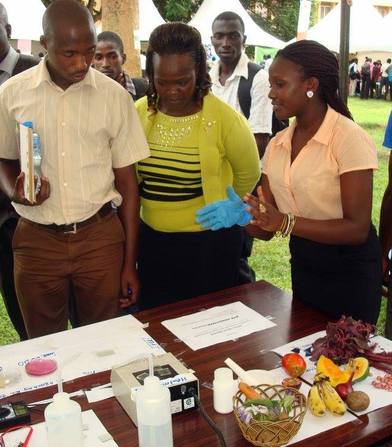
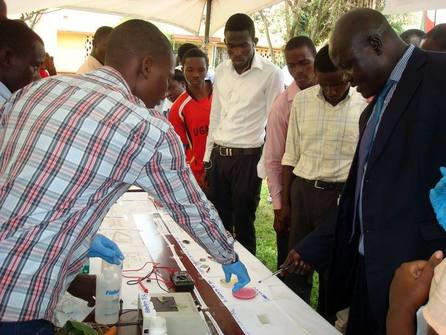

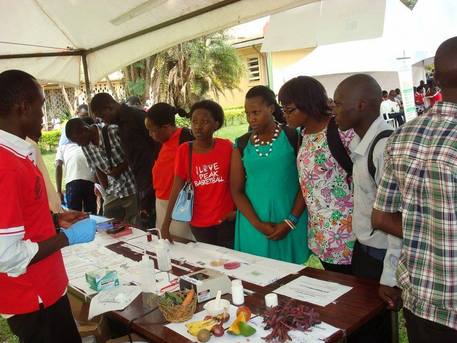
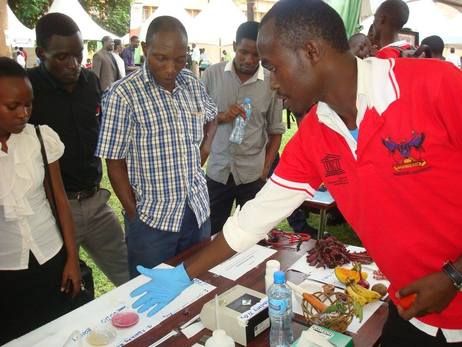
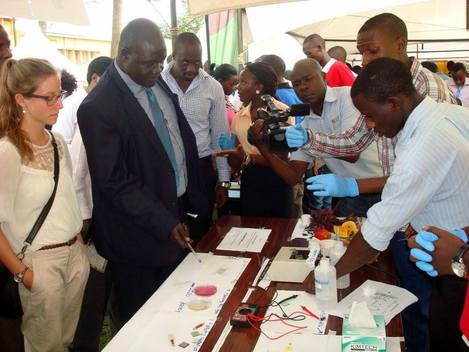
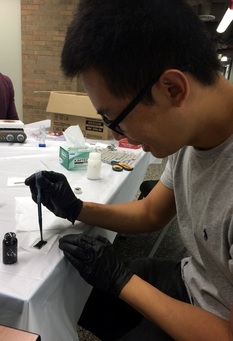
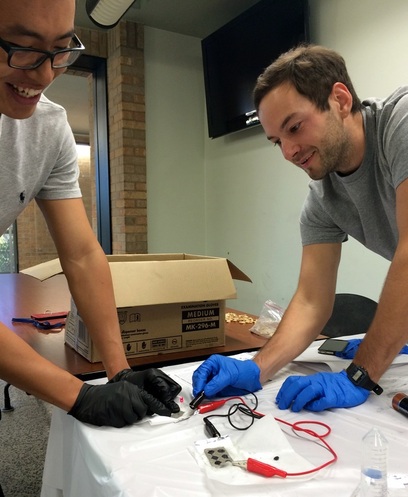
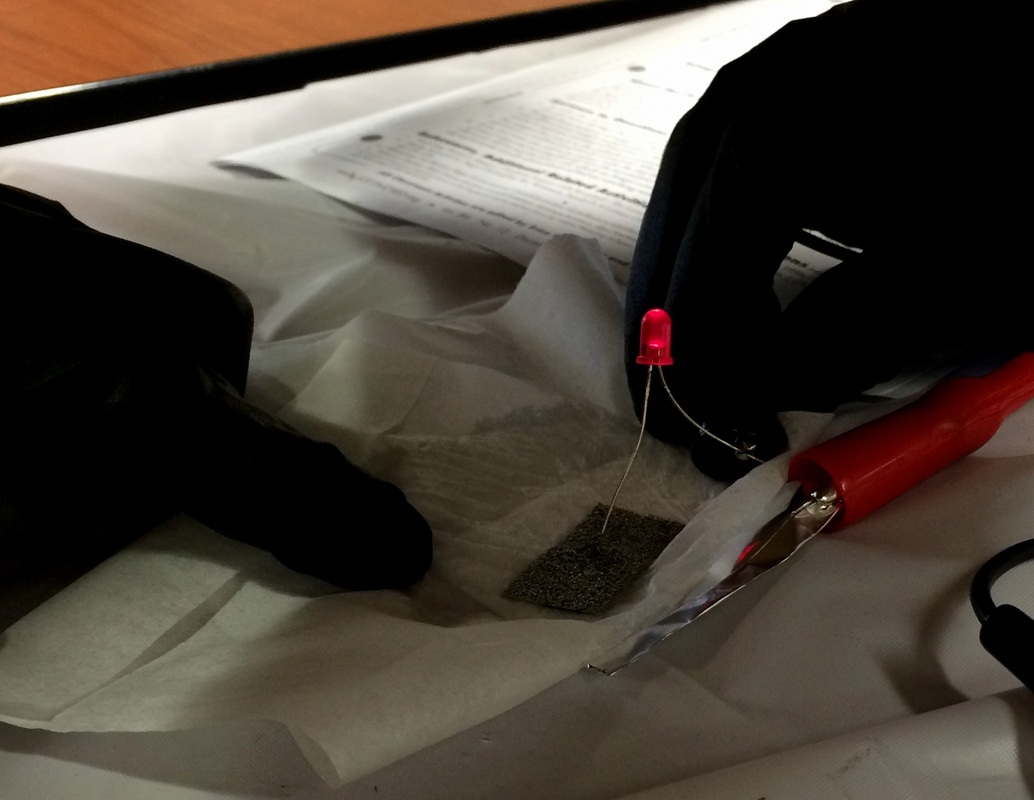
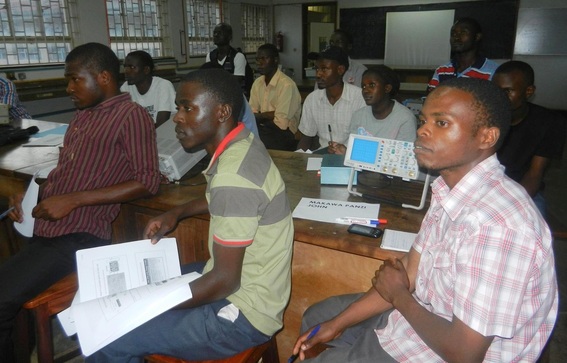
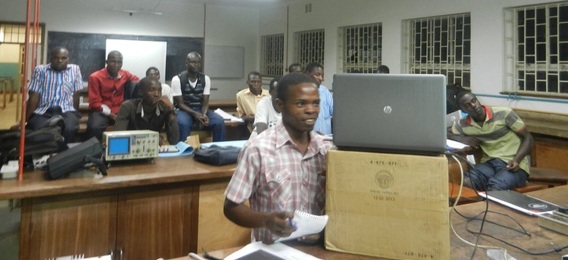

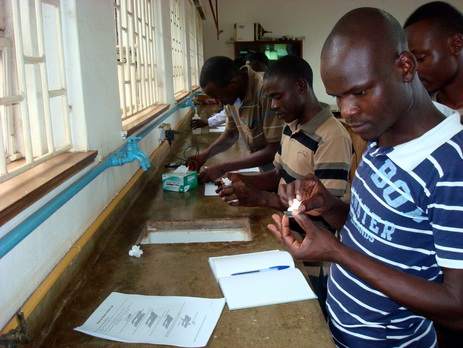
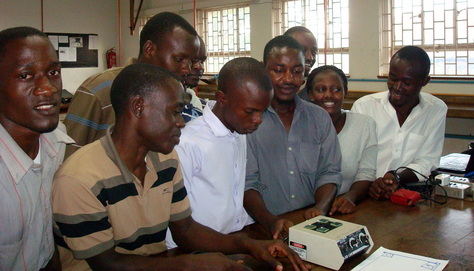
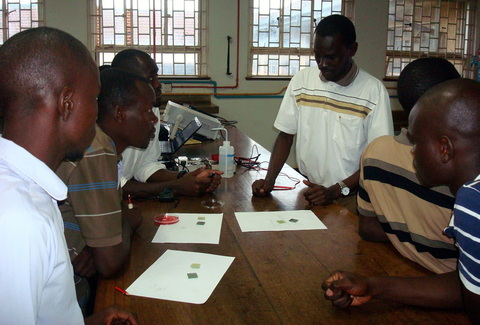
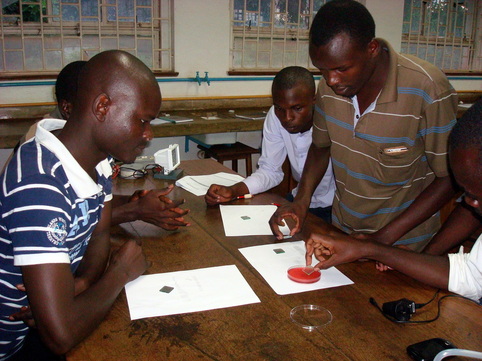
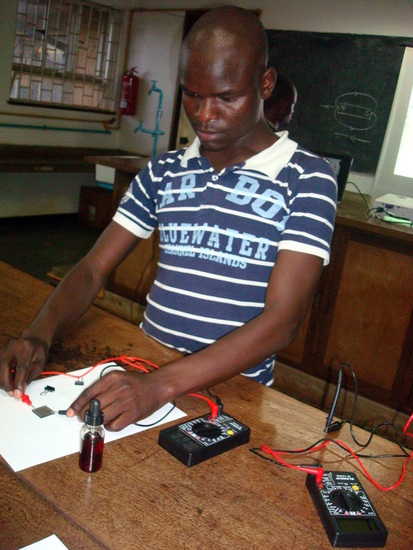
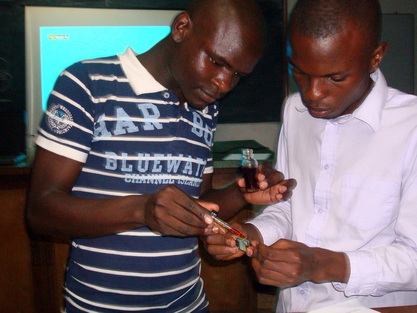
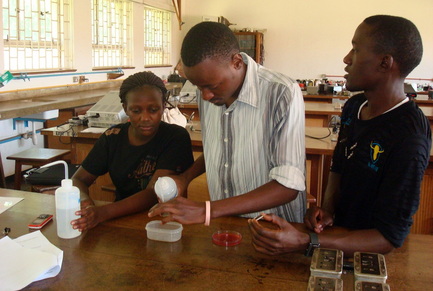
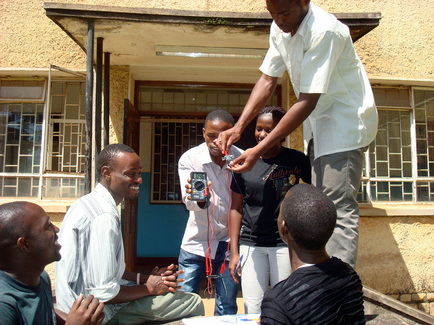
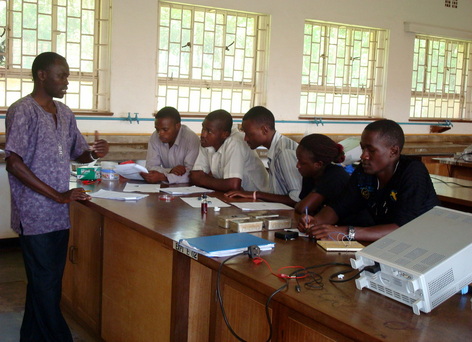
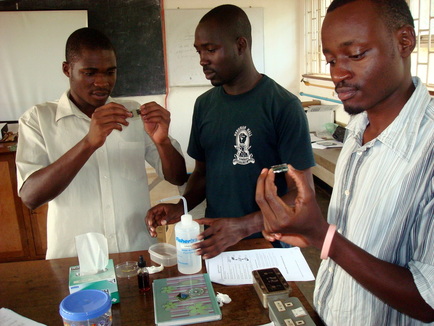
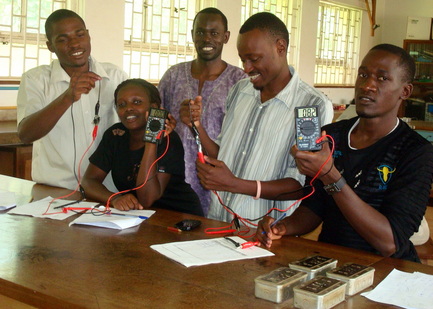
 RSS Feed
RSS Feed
